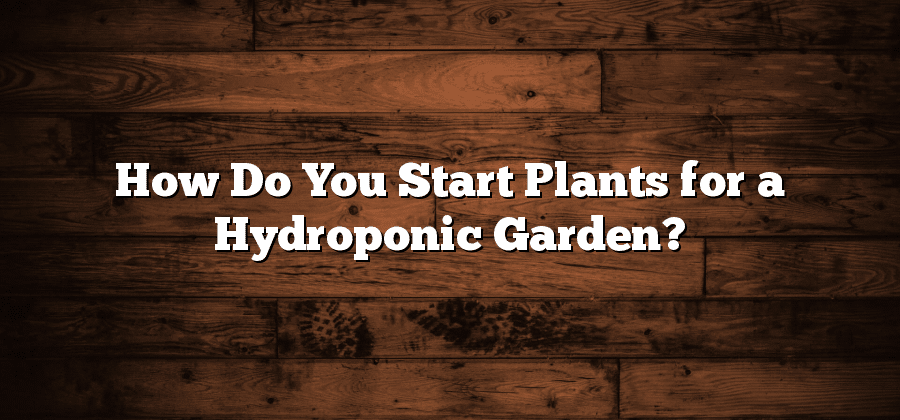Understanding the Basics of Hydroponic Gardening
Hydroponic gardening is a soilless method of growing plants that has gained popularity in recent years. Instead of relying on traditional soil, hydroponic systems use a nutrient-rich solution to provide the necessary minerals and nutrients for plant growth. This allows for better control over the growing environment and can result in faster growth and higher yields.
One of the key advantages of hydroponic gardening is its ability to conserve water. Compared to traditional soil-based gardening, hydroponic systems use significantly less water because the nutrient solution can be recirculated and reused. This makes hydroponic gardening an attractive option for areas with water scarcity or limited access to fresh water. Additionally, hydroponic systems can be set up in small spaces, making it ideal for urban gardening or indoor farming initiatives.
Selecting the Right Plants for Hydroponic Cultivation
Plants play a crucial role in hydroponic gardening as they are entirely dependent on the nutrient-rich water solution for their growth and development. When it comes to selecting the right plants for hydroponic cultivation, there are a few key factors to consider. Firstly, it is essential to choose plants that are well-suited for a soilless environment and can thrive in water-based systems. These plants should have a strong root system that can easily absorb nutrients from the water solution. Additionally, the plants should have a relatively fast growth rate and be able to tolerate the fluctuating water and nutrient conditions commonly found in hydroponic systems.
One important aspect of selecting plants for hydroponic cultivation is to consider the type of system being used. Different hydroponic systems have varying requirements, and certain plant species may perform better in one system compared to another. For example, deep water culture systems are ideal for plants with larger root systems, while nutrient film technique systems are better suited for plants with smaller root systems. Understanding the specific needs of your chosen plants and matching them to the most suitable hydroponic system will greatly enhance their growth and overall success in your garden.
By carefully selecting the right plants for hydroponic cultivation and considering the compatibility with your chosen hydroponic system, you can create an optimal growing environment that promotes healthy and robust plant growth. In the next section, we will delve into the different types of hydroponic systems available and how to choose the most suitable one for your garden.
Choosing the Suitable Hydroponic System for Your Garden
Hydroponic gardening has gained popularity in recent years due to its many advantages over traditional soil-based gardening. One key factor to consider when setting up your hydroponic garden is choosing the suitable hydroponic system. There are various types of hydroponic systems available, each with its own set of pros and cons.
One popular hydroponic system is the Nutrient Film Technique (NFT). This system relies on a thin film of nutrient-rich water flowing over the roots of the plants. It is a simple and effective method that allows plants to take up the required nutrients while also providing adequate oxygen for root growth. However, NFT systems require careful monitoring of nutrient levels and proper maintenance to prevent clogging and ensure continuous flow.
Another commonly used hydroponic system is the Deep Water Culture (DWC) system. In this system, plants are suspended in a nutrient-rich solution with their roots submerged in the water. Oxygen is provided through the use of air pumps or air stones, ensuring healthy root development. DWC systems are relatively easy to set up and maintain, making them ideal for beginners. However, they require more frequent monitoring of pH levels and can be prone to root diseases if proper hygiene is not maintained.
When choosing the suitable hydroponic system for your garden, it is important to consider factors such as space availability, initial setup costs, maintenance requirements, and your personal gardening goals. It is also recommended to do thorough research and consult with experts to determine which system would work best for your specific needs. By making an informed decision, you can ensure that your hydroponic garden thrives and yields a bountiful harvest.
Preparing the Hydroponic Medium for Plant Growth
One of the crucial steps in hydroponic gardening is preparing the hydroponic medium for optimal plant growth. The hydroponic medium, also known as the substrate or growing medium, serves as a substitute for soil, providing support and stability for the plants’ roots. Unlike traditional gardening, where soil is the primary medium, hydroponic systems rely on various materials that can effectively hold moisture while allowing for proper root aeration.
A popular choice for a hydroponic medium is inert materials such as **perlite**, **vermiculite**, and **coconut coir**. These materials are lightweight, porous, and have excellent water retention properties. Additionally, they have a neutral pH level, which prevents nutrient imbalances and enables precise control over the plant’s nutrient intake. It is essential to sterilize the hydroponic medium before using it to eliminate any potential pathogens, pests, or diseases that could harm the plants. Sterilization can be achieved through heat treatment or using chemicals specifically designed for sterilizing hydroponic systems.






